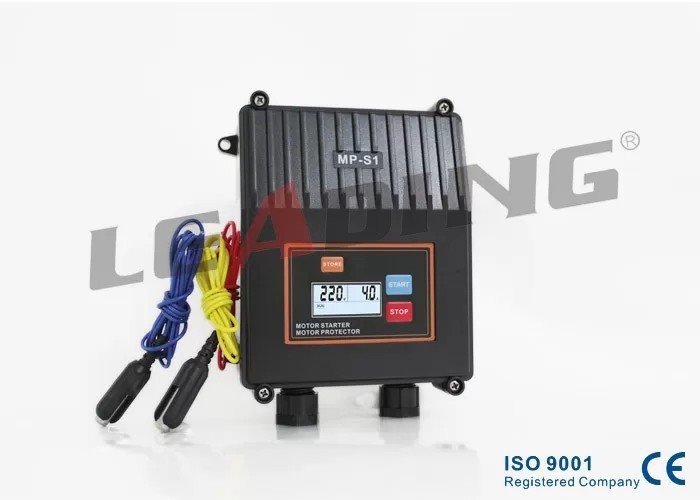Hey there! As a supplier of Single Phase Pump Control Panels, I've seen firsthand how crucial it is to keep these panels up - to - date. Upgrading your single - phase pump control panel can enhance performance, improve safety, and save you money in the long run. In this blog, I'll walk you through the steps to upgrade your single - phase pump control panel.
Why Upgrade?
Before we jump into the how - to, let's talk about why you might want to upgrade your control panel. Over time, technology advances, and older control panels may not be as efficient or reliable as the newer models. Upgrading can give you access to features like better motor protection, more accurate water level control, and easier maintenance.
For example, our Pump Motor Stalled Protection Single Phase Pump Control Panel with IP54 offers enhanced protection against motor stalling, which can prevent costly repairs and downtime. And if you need a panel that can adapt to different applications, check out our Single Phase Pump Control Panel Can Meet Different Application.
Step 1: Assess Your Current Panel
The first step in upgrading your single - phase pump control panel is to assess your current setup. Take a good look at your existing panel and note down its features, specifications, and any issues you've been having. This will help you determine what kind of upgrade you need.
Check the age of the panel. If it's more than 10 years old, it's likely due for an upgrade. Look for signs of wear and tear, such as frayed wires, corroded components, or malfunctioning switches. Also, consider the performance of the pump. Is it running inefficiently? Does it trip the breaker frequently? These are all indicators that an upgrade might be necessary.
Step 2: Set Your Budget
Once you've assessed your current panel, it's time to set a budget for the upgrade. The cost of a new single - phase pump control panel can vary depending on its features and quality. You can find basic panels for a few hundred dollars, while more advanced models with additional features can cost over a thousand dollars.
Think about what features are most important to you. If you need advanced motor protection and water level control, you'll probably need to spend a bit more. But remember, investing in a high - quality panel can save you money in the long run by reducing maintenance costs and improving pump efficiency.
Step 3: Research New Panels
Now that you have a budget in mind, it's time to research new single - phase pump control panels. Look for panels that offer the features you need and fit within your budget. You can start by checking out online reviews and comparing different models.
Our Single Phase Universal Pump Controller with Built - In Water Level Control is a great option for many applications. It has a built - in water level control, which means you don't have to install a separate water level sensor. This can simplify the installation process and reduce costs.
Step 4: Choose a Professional Installer
Installing a new single - phase pump control panel is not a DIY job. It requires electrical knowledge and experience to ensure that the panel is installed correctly and safely. Look for a professional electrician or pump installer who has experience working with single - phase pump control panels.
Ask for references and check their reviews online. A good installer will be able to assess your needs, recommend the right panel for your application, and install it properly. They'll also be able to provide you with maintenance tips and support after the installation.
Step 5: Installation and Testing
Once you've chosen an installer, it's time to schedule the installation. The installer will start by disconnecting the power to the old panel and removing it. They'll then install the new panel, connect the wires, and test the system to make sure it's working properly.
During the installation, the installer may need to make some adjustments to the pump and the control panel settings. This is normal and ensures that the system is optimized for your specific application. After the installation is complete, the installer will provide you with a demonstration of how to use the new panel and answer any questions you may have.
Step 6: Maintenance and Monitoring
After the new single - phase pump control panel is installed, it's important to perform regular maintenance and monitoring. This will help ensure that the panel continues to operate efficiently and safely.
Check the panel regularly for signs of wear and tear, such as loose connections or damaged components. Clean the panel periodically to prevent dust and debris from building up. Also, make sure to test the system regularly to ensure that it's working properly.
If you notice any issues with the panel, such as strange noises or malfunctioning switches, contact your installer immediately. They'll be able to diagnose the problem and make the necessary repairs.
Conclusion
Upgrading your single - phase pump control panel is a smart investment that can improve the performance, safety, and efficiency of your pump system. By following these steps, you can ensure that the upgrade process goes smoothly and that you end up with a high - quality panel that meets your needs.


If you're interested in learning more about our Single Phase Pump Control Panels or have any questions about the upgrade process, feel free to reach out. We're here to help you find the right solution for your application and guide you through the purchasing process. Whether you're a homeowner looking to upgrade your well pump or a business owner in need of a reliable pump control system, we've got you covered. Let's start the conversation and get your pump system running at its best!
References
- General knowledge from the pump control panel industry
- Product specifications and features of single - phase pump control panels




